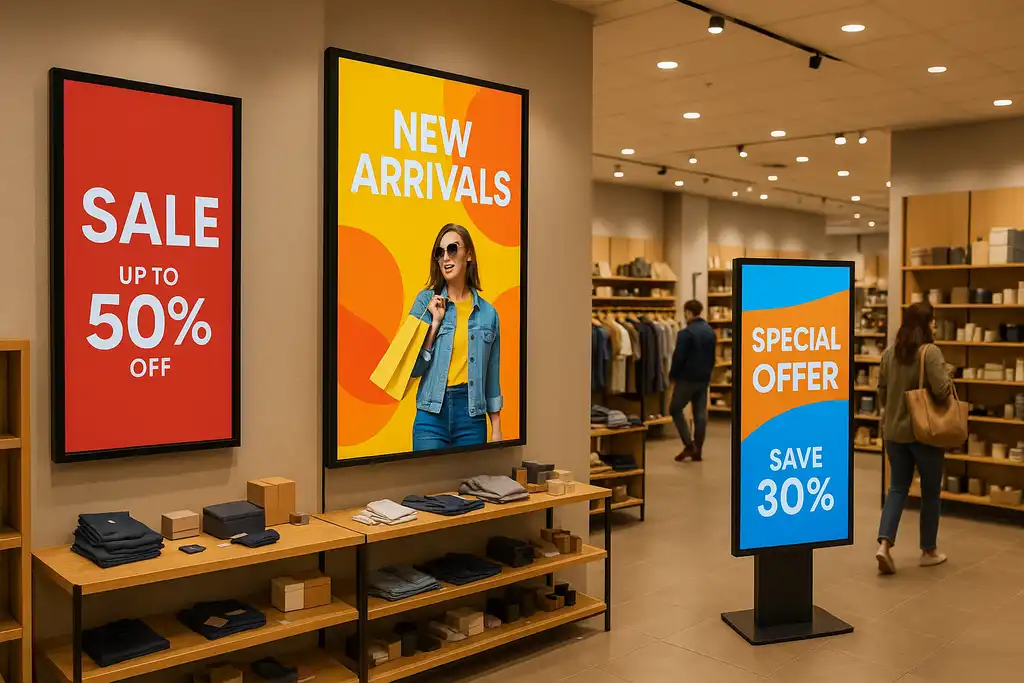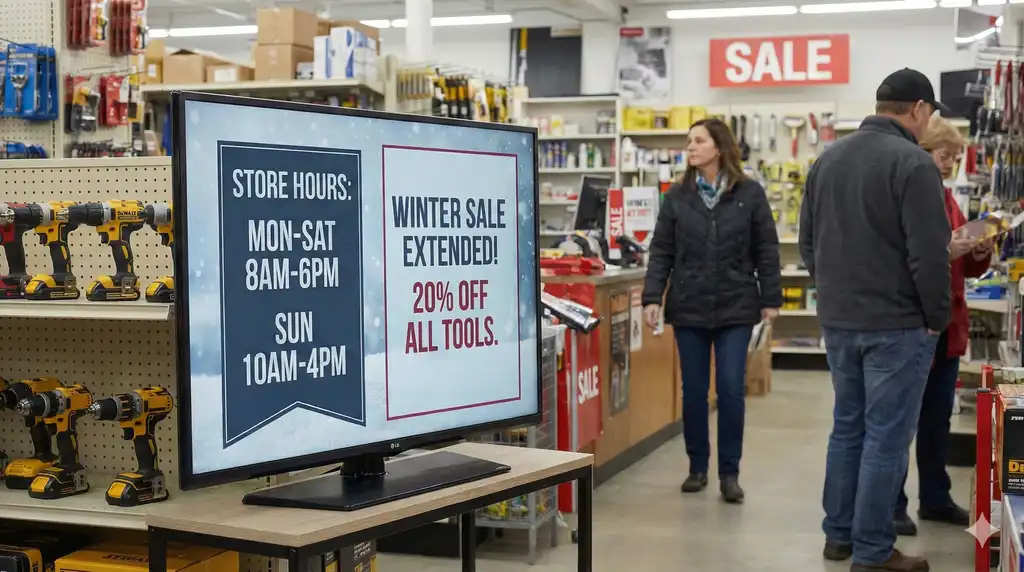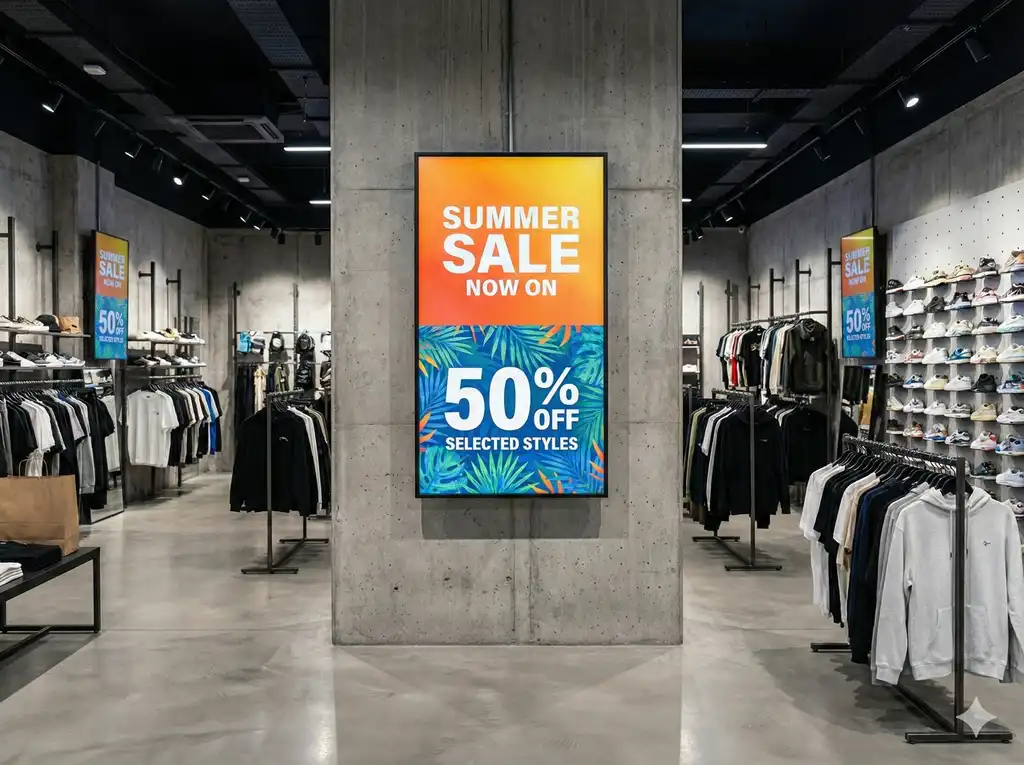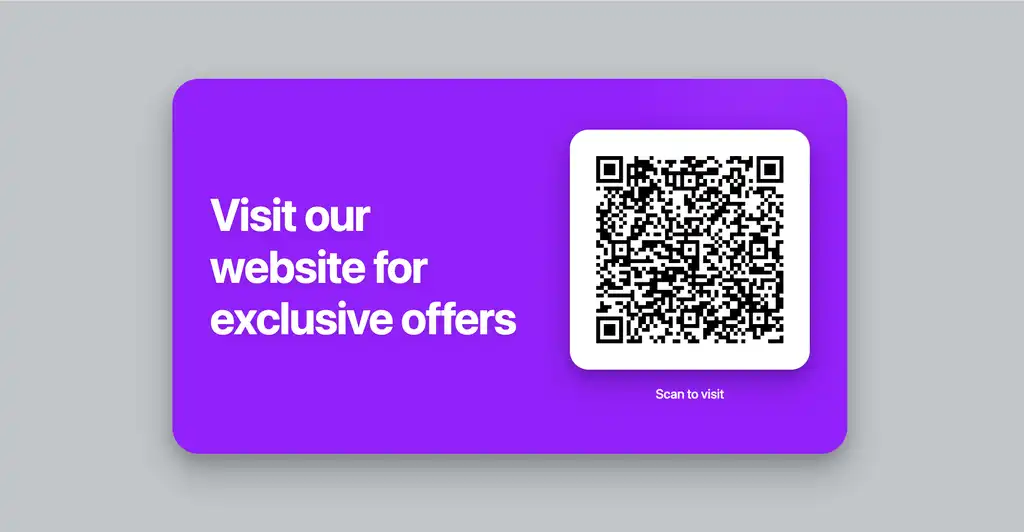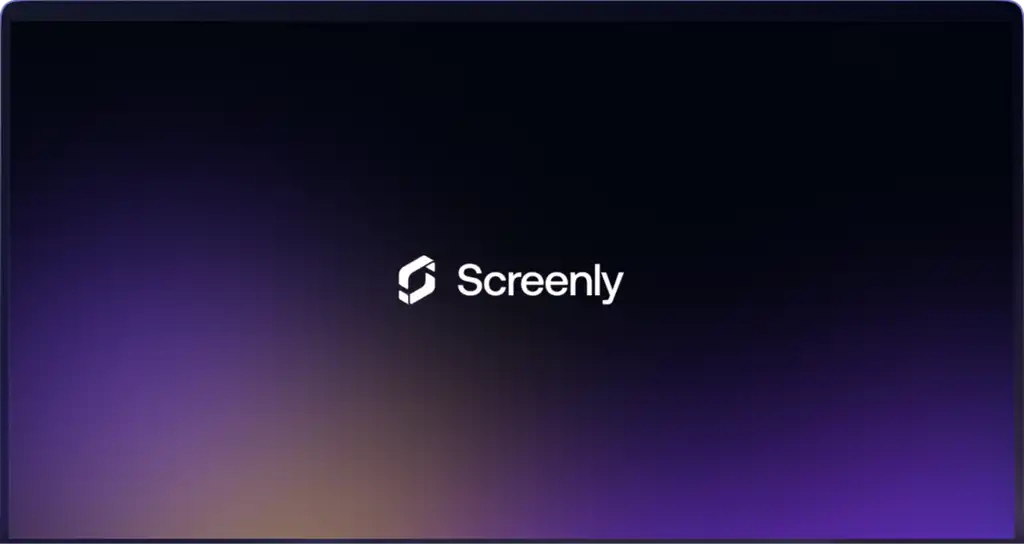Digital signage programs make it easy for businesses to deploy and manage digital signs at scale. Learn more about how to evaluate and select a digital signage program for setting up digital signage at your business or organization in the post below.
Why businesses need digital signage programs
Digital signage can replace static posters and bulletin boards with vibrant, real-time content. This dynamic format naturally draws more attention from customers and employees, helping businesses convey information in a more memorable way. Whether it’s a retail store showcasing daily specials or an office displaying HR announcements, screens can rotate through images, videos, and live data that captivates viewers. Importantly, digital signage is completely contactless for the audience – customers and employees don’t need to touch a screen or download an app to get the message. They can simply look up and see the latest content. By removing barriers to information (no logins needed), digital signs can ensure that company messaging and data reaches everyone quickly. Overall, a well-crafted digital signage program boosts communication effectiveness, brand consistency, and even team morale, as people stay informed and connected to the organization’s message and goals.
Scaling signage deployments with ease
One of the biggest advantages of modern digital signage programs is the ability to manage and scale your display deployments effortlessly. In the past, updating multiple screens meant running around with USB drives or manually changing each sign – a tedious and time-consuming task. Today’s cloud-based signage software eliminates that hassle. Businesses can control a single screen or hundreds of screens from anywhere using a web dashboard. For example, instead of visiting each location, a manager can schedule and publish new content to every screen across all office locations in seconds. With a robust digital signage content management system (CMS), teams can oversee content on many displays from anywhere, saving countless hours. They can coordinate campaigns and schedule messaging centrally, ensuring all locations stay in sync without anyone needing to leavetheir desk.
Key features to look for in a digital signage program
When evaluating digital signage software, it’s important to look for a robust feature set that will meet your communication needs now and as you grow. Below are some key features and considerations to keep in mind as you evaluate digital signage programs.
Support for diverse content types: Ensure the platform supports all content types that you plan to show – images, videos, slideshows, web pages, data dashboards, PDFs, and more. The best digital signage programs are content-agnostic, and this content flexibility makes it easier to keep your screens fresh and engaging.
Playlist management: Look for the ability to create playlists or rotations of content. Playlist management lets you arrange multiple pieces of content in a sequence that plays in a loop, so you can continuously run your digital signs without manual intervention. For instance, you might loop a welcome message, a promotional video, and then a news ticker in a playlist.
Content scheduling: A good signage program lets you schedule content and set recurring times for specific messages. You can schedule a breakfast menu to display each morning or have holiday greetings appear on certain dates. Advanced scheduling guarantees that the right content shows at the right time, without someone needing to toggle it manually.
Screen grouping and tagging: As your deployment grows, you’ll want to organize screens into groups (by location, department, etc.) or tag them by category. This feature allows you to publish content to many screens at once based on their group or tag. For example, all lobby screens might get a welcome video, while all factory floor screens get a safety alert. Grouping and tagging saves time by enabling bulk content management across similar displays.
Most digital signage programs allow users to get started with a free trial. The best way to check out a digital signage program for your deployment is to, well, check it out. Get your first sign running, and you’ll understand a lot more of the details than you ever would by just reading a digital signage platform’s features.
Advanced features for enterprise needs
For larger organizations and enterprise IT teams, there are additional advanced features to look for in a digital signage solution. These capabilities help with security, collaboration, and reliable service at scale:
Multi-user access with SSO: In an enterprise environment, multiple team members (marketing, HR, IT, etc.) may need to manage content. Look for software that supports multiple user accounts and single sign-on (SSO) integrations (using SAML or other protocols). SSO allows your team to log in with existing company credentials, streamlining access while keeping it secure. With multi-user support, you can collaborate on signage management without sharing passwords.
Granular access controls: Not everyone should have the same permissions on your account. Good digital signage programs let you set granular access controls and user rights. For example, you might assign Admin, Editor, and Viewer roles with varying levels of control. Such role-based access ensures security and governance over your screens. Additionally, audit logs are a valuable feature – the system should track who made each change and when, providing an audit trail for accountability.
Enterprise-grade support and SLAs: When your communications rely on dozens or hundreds of screens, any downtime or issue needs prompt attention. Enterprise-focused signage providers typically offer dedicated account managers and service-level agreements (SLAs) that guarantee fast support response times. This means if a problem arises, you have a direct line to expert help with defined turnaround times. High availability and reliability are key to a successful SLA, ensuring your digital signs stay up and running when you need them. Prioritizing providers with strong support commitments will give you peace of mind as you scale your deployment.
Of course, an enterprise digital signage system should be able to grow with your needs. You should be able to manage tens, hundreds, or even thousands of screens as easily as you can manage just one. This scalability, paired with the above multi-user and security features, is key to maintaining a successful, enterprise signage network.
Integration and customization capabilities
Every business has its own tech stack and unique requirements. The ideal digital signage program will integrate smoothly with your existing systems and offer customization options to adapt to your use cases. One major consideration when selecting a digital signage program is the availability of a digital signage API and other developer tools. A robust API allows you to connect the signage software with your other applications or databases – for example, pulling live data from your CRM to display on screens, or triggering certain content based on events. Leading digital signage solutions provide developer-friendly features like APIs and command-line interfaces, so your team can tailor the platform to your development workflows.
Beyond standard integrations, look at the possiblity of building and running custom digital signage apps. Screenly Edge Apps, for instance, offer a powerful way to build custom signage applications. Edge Apps run natively on Screenly devices, enabling you to create bespoke apps or widgets for your screens with almost zero latency. Developers can even edit these apps at the code level, line-by-line, to achieve exactly the functionality that the business needs. This means if you have a special use case, you can develop it on top of the signage platform itself. The flexibility to deploy custom code on your players opens up endless possibilities, from integrating IoT sensor data to designing completely unique on-screen experiences. When evaluating digital signage programs, consider how well they can adapt to your business: the best solutions will offer both out-of-the-box integrations and the freedom to build your own, ensuring the system can evolve with your requirements.
Check out the Screenly Edge App Store and some of our recent vibe-coded Edge App tutorials on Youtube. We recently made a tutorial on vibe-coding a queue management Edge App and an indoor air quality sensor Edge App.
Other factors when evaluating digital signage programs
Aside from the major points above, there are a few other important factors to keep in mind to make a smart decision:
Ease of use: An intuitive, user-friendly interface is crucial, especially if non-technical staff will be updating content. A well-designed digital signage program should make tasks like adding media or scheduling playbacks simple and straightforward. This minimizes training time and user errors, allowing your team to focus on messaging rather than wrestling with the software. A quick demo or free trial can help gauge how easy the platform is to navigate.
Compatibility: Make sure the software and any media player devices are compatible with your intended screen hardware. The top platforms (like Screenly) are flexible, working with standard TVs, smart TVs, monitors, and commercial displays via inexpensive players or even just a web browser. You shouldn’t have to purchase proprietary screens or digital signage players unless you want to – check that the program supports the hardware you already have or plan to use.
Security: Digital signage is part of your IT footprint, so digital signage security matters. Look for features like encryption, secure device management, and user access controls to prevent unauthorized access or tampering. Reliable providers will also roll out regular software updates and security patches. Protecting your signage network ensures that only the intended messages are displayed – the last thing you want is a hacked screen. Robust security measures are a sign of a mature, trustworthy platform.
By keeping all these factors in mind – from content capabilities and scheduling to security and scalability – you can confidently choose a digital signage program that meets your business’s needs.
Get started with digital signage from Screenly
Modern digital signage software can transform how you connect with both customers and employees. Screenly offers an easy-to-use platform loaded with all the features discussed above to make digital signage management a breeze. If you’re curious to see the impact for yourself, consider signing up for a free 14-day trial of Screenly’s digital signage program. With no upfront commitment, you’ll be able to test out content scheduling, remote management, Edge Apps, and more.

